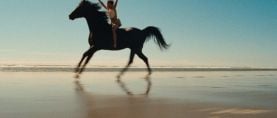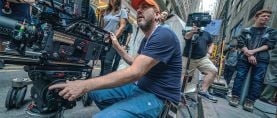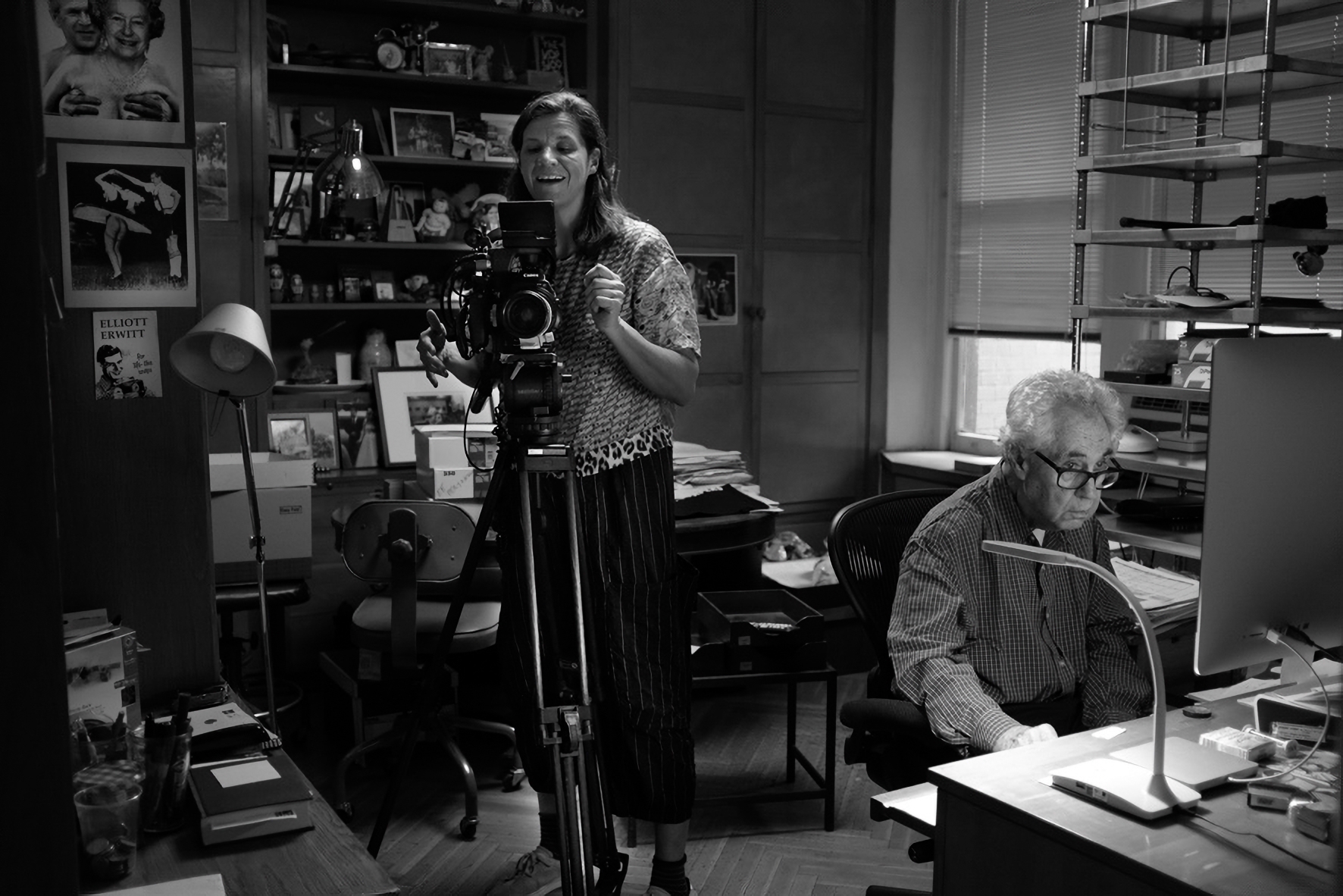
Shared Spaces: Kirsten Johnson, ASC
The award-winning cinematographer and director discusses entering and filming real-world locations, and revealing their hidden truths
This article was originally published with a different introduction in AC March, 2019.
Kirsten Johnson, ASC — the award-winning director of Cameraperson (2016) and Dick Johnson Is Dead (2020), and cinematographer of award-winning documentary films like Citizenfour (2014), The Invisible War (2012), and The Oath (2010) — embodies the duality of her craft: she is both a masterful technician and an intuitive artist.

Her work challenges the conventional view of the cameraperson as a mere observer and reflects a deeper, more personal way of seeing — from capturing the realities of war zones and hospitals to the subtleties of boxing matches, churches, courtrooms, and classrooms, as well as intimate moments from her own life.
Her approach is not just to document, but to interpret and present her unique vision of the world. Her technique — grounded but impactful, intimate and expansive — allows viewers to journey alongside her, experiencing places and moments through her discerning eye.
“My primary concern is to tap into how a place makes me feel. What’s fascinating to me about documentary work is that you enter places where you would otherwise never get to go, and suddenly you feel differently about the world.”
— Kirsten Johnson, ASC
Places hide things, she tells American Cinematographer: "Once, I filmed in the beautiful home of a middle-class family where the father was an alcoholic, and it felt as terrifying to me as any war zone. There are places where the light is gorgeous and hot and sunny, and associated with positive things, but then suddenly you realize this is a place where intense and terrible things have happened or are happening. What is it about these places, besides the people, that make them feel that way? That’s what I started looking for in my work."
American Cinematographer: This speaks to how one’s relationship to a place affects the way one sees it.
Kirsten Johnson, ASC: I’m deeply interested in the contradictions between the visual information I receive and the meaningful information I want to communicate. I remember being in Rwanda and filming people imprisoned for participating in the Tutsi genocide — whether or not they were guilty was totally unclear to me — working in the fields while wearing these pink prison uniforms. There was something about the light and the color of the place that was aesthetically wonderful in a way that said nothing about its actual meaning.
At moments like these I have to stop and ask myself, what’s the context? How can I see the world in an extra-dimensional way? How do I see into history? What’s behind the façade that a person or a place presents to the camera? Where is the contradictory information? I find myself often searching for the invisible.
Is that what you mean in Cameraperson when you talk about ‘moving through the banal to find something interesting’?
I think of cinematography as a practice in which you learn how to see by the act of seeing. So you might think you know something about the world, but when you’re actually confronted with it, what you’re looking at teaches you how to understand things differently.
For example, yesterday I went to film what was, in my mind, a crush of holiday shoppers at Rockefeller Center. I wanted the scene to be about disorientation, but when I got there I realized that these people were all rushing around and hurrying to get something to give. I expected crass commercialism and misery, but I was moved because I happened to witness a loving interaction between a parent and their child. Then I started to notice similar interactions between other people in that space, and it totally flipped the scene.
I love it when a place shows me how to see in a new way, and that usually has to do with the amount of time I spend there. I was in a courtroom in Illinois, shooting death-row clemency hearings for Deadline. We were in the same room for hours and hours, one hearing after another, filming shots of the judge and cutaways of the family.
I started with this stock set of shots — wide shot, tight, close-up — and then the emotion of the proceedings sent my thoughts drifting onto different paths. I ended up doing a series of shots of people about to touch something — an object or another person — but then they didn’t touch it. I started to learn about people’s hesitancy in that space, because I saw this thing happen again and again. When I started searching for those kinds of shots, I began to realize the relationship to time and place after seeing the reflection of the courtroom’s wall clock on all of these different surfaces. These shots would make no sense on their own, but when I built up a visual vocabulary for them in the scene, they were able to express the extreme difficulty of being in that space.
When you first go into a space, you do what is known; you’re quoting what’s been filmed before. I particularly believe that the racism and classism of imagery repeats itself, because when you’re filming on the spot, you sometimes only have the time to repeat what you already know. Hale County This Morning, This Evening by RaMell Ross, for instance, is a documentary about the search for a new way to see the South, the search to reinvent and to see in a different way, to break through the banality of racism and all of its old imagery to a freshness of images.
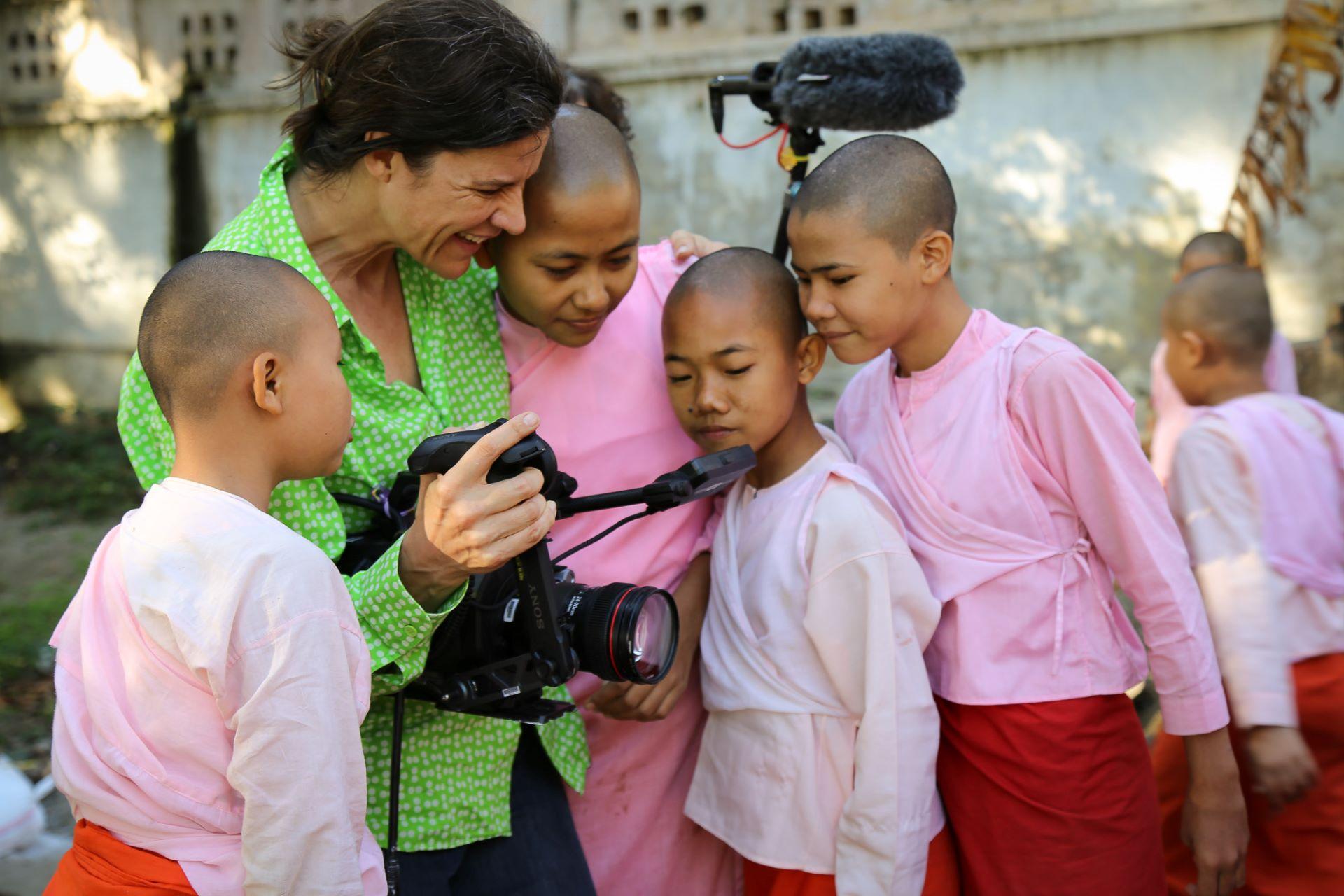
So when you open yourself up to the potential of a new place, you’re able to create new images because you’ve tapped into something unique?
Yeah, and sometimes you just have to start in the banal place of getting coverage — you need those wide shots, a medium, a close-up, and overs — and as you move through the space, it reveals new things. That has to do with your proximity to your subject, and how much you move behind things or in front of them.
This is deeply physical work. It really matters that you are there and your experience is in-body. Maybe you’ll have to climb a rickety ladder up to a broken roof, and if you’re open and paying attention, that will give you some insight into the infrastructure of the place, and then you can better understand the lives of the people who live there. You can’t walk in their shoes, but you can walk in their world — feel its textures and light — and that is also what changes your ability to see it.
It’s a body in a location receiving all the feedback that a body receives: sight, sound, smell, touch, taste. Like in the home of the alcoholic father — it was such a terrifying place because he controlled it and everyone was constricted within it. That feeling of constriction provided me with a way to frame the scene.
Most people, when they think about filmmaking, tend to think about what they can see.
We don’t always encourage ourselves to think with our bodies either — to enter a space and ‘see’ with our ears, or sense of smell, or our hands, or to make ourselves small, or jump up on top of something. I love that I’m allowed to move in ways that I would not be allowed to move if I wasn’t holding a camera. I can sit on the floor in an extremely formal situation, next to a very important person, and see from there how that person is moving their foot — and from that one detail I can understand things about their character that were previously hidden to the world.
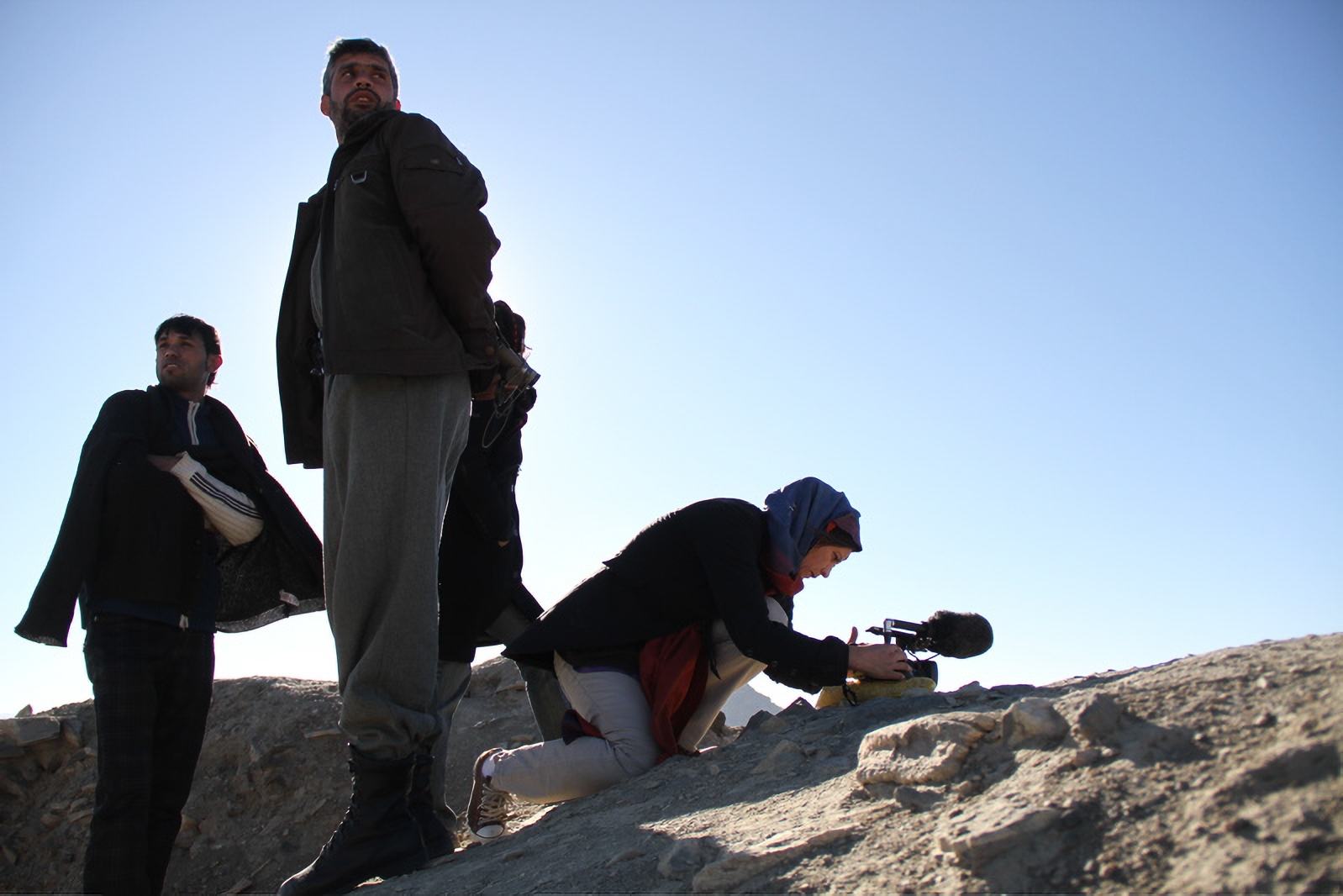
I filmed with a general in Afghanistan, and because of where I was positioned, closer to him than almost anyone is allowed to be, I was able to see him rattling around in his pocket for something, which turned out to be one of those red-hot jawbreakers. Then I realized he had a whole pocket full of them, and what he would do is put one in his mouth and try to not chew it, but inevitably he just cracked down on them. That action tells a story about him and the kind of pressure he’s under, and what his life is like internally.
Arthur Miller says that the role of the artist is to reveal what is hidden, and I believe if you spend enough time in any one place — no matter how banal it may seem on the surface — pay attention, and open yourself up to its potential, then something hidden will reveal itself. Openness comes through moving and being close to things and people. It comes from being unafraid and unashamed. Two of the biggest barriers to seeing are shame and fear.
How so?
A lot of times, we’re trying to do ‘beautiful,’ right? We’re trying to make an image that proves to the world that not only are we competent, we’re visionary. So much of what we’re taught about cinematography has to do with achieving mastery and masking our incompetency. It’s why so much of the craft is conceptually hermetic.
But if we were unashamed, what we would show to the world through our images is that we’re searching, and that we are humbled and delighted and turned on by the complexity of things. You have to be unashamed to do that, because that involves mistake-making, being out of focus, being unsteady, having incorrect exposure or a disorienting, unconventional frame that doesn’t immediately read as ‘beautiful.’
I want to bring up a sequence from Cameraperson — the montage of footage from Bosnia, Texas, Wounded Knee, the church in Rwanda, Ground Zero, and Liberia. It’s the extraordinarily awful truth of what happened in these places that makes their sheer ordinariness so visually interesting.
All of those places were deeply disturbing places to be. That’s another source of fear and shame: You feel the horror of reality and want to leave, but you also feel shame because you’re there to gather evidence, to recognize what happened, and part of you is incapacitated because you know human beings suffered or died in that place.
How important are beauty and aesthetics in the face of such truths?
I believe aesthetics are everything. It is the material of our work and the way we convey feeling to the audience. But when it comes to beauty or even truth, I’m inquisitive, suspicious, wanting to re-contextualize, because a large part of our culture has collectively settled for these monolithic concepts.
There’s a deep, personal subjectivity to how people see. One of my goals is to aid people in looking at things they don’t want to see or wouldn’t ordinarily consider beautiful, and to do it for their own pleasure. I’m a great believer in pleasure.
That gets forgotten in certain contexts, especially in the documentary world, where we’re often grappling with really difficult problems and the subject matter is often one of great loss, or trauma, or sorrow. We get so intently focused on pain and suffering that we forget about pleasure and humor, when sometimes the only way to emotionally understand poverty or pain is through pleasure.
Like in the scene with the elderly Bosnian woman, where you changed the subject from the war to her personal style. Suddenly her whole demeanor shifted, and she opened up.
Right? And instead of her being ‘random victim of Bosnian war,’ she’s unforgettable. She not only helped me see her differently, she changed me, too. I dress in this much more over-the-top way because of her. That’s true communication.
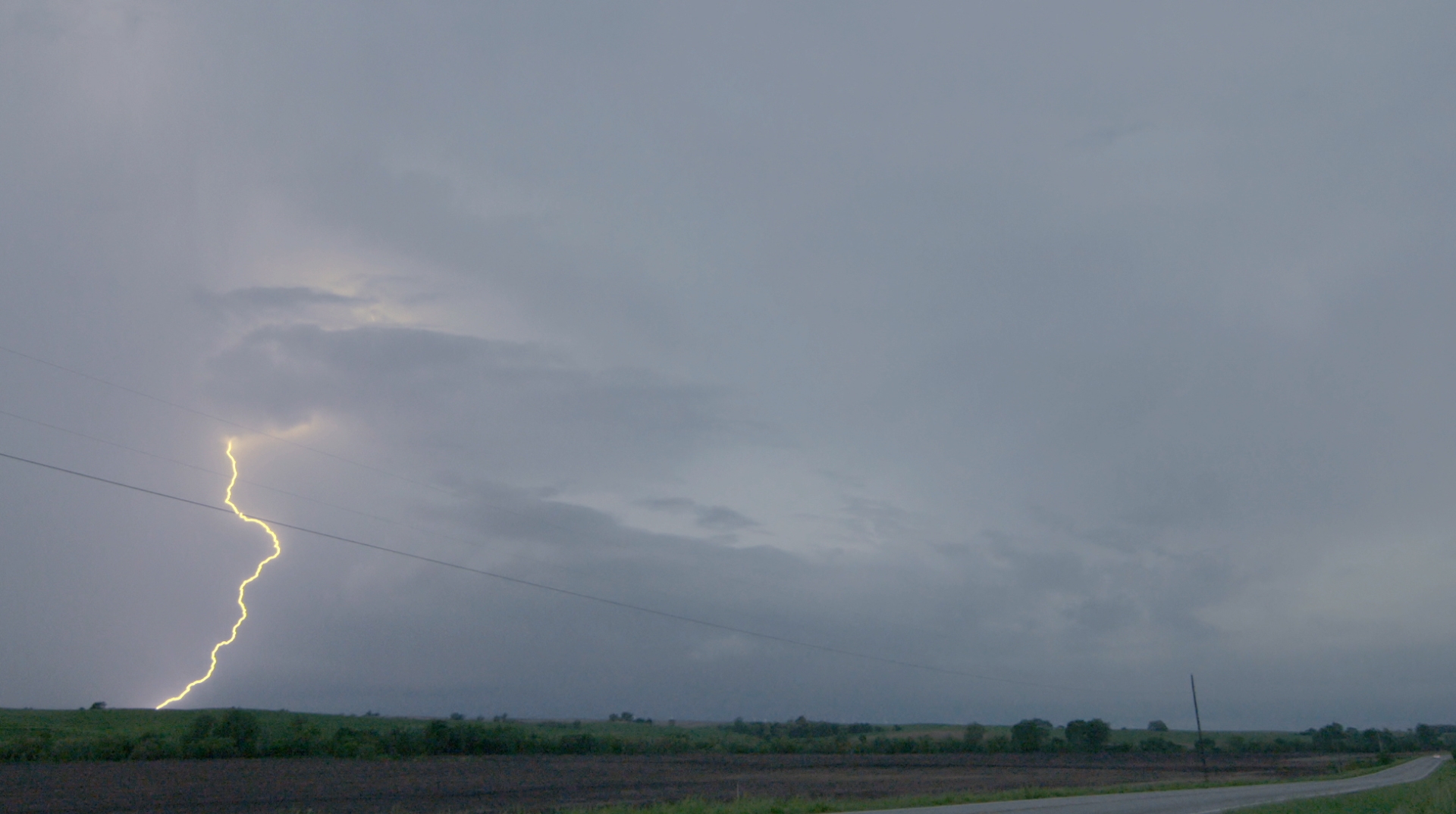
We haven’t really touched on duration. I’m reminded of the shot toward the beginning of Cameraperson where the camera’s set up next to an open road, somewhere in the Midwest, just locked off on these dark clouds in the distance, and then suddenly this perfectly framed lightning strike happens. It seems to suggest that if you point a camera at something long enough, something interesting will happen.
You learn over the years of filming how to wait for a meaningful moment, to not stay in one place for nine hours, but to arrive two minutes before the thing happens. It’s an intuition, like the way an animal knows the weather’s going to change. You develop it over time as a documentary cinematographer, where all of the hours you spend filming will sensitize you to the world — even the most unexpected things like lightning striking.
What triggers this sense?
It absolutely comes from the time you put in. You develop this intense focus on the present while being able to think a few moments into the future. There are sensory indications that a shift is about to happen. Often I’ll be filming someone, and I’ll know when to stand up right before they do — and what’s interesting is that just as often the sound person working with me will stand up before I do.
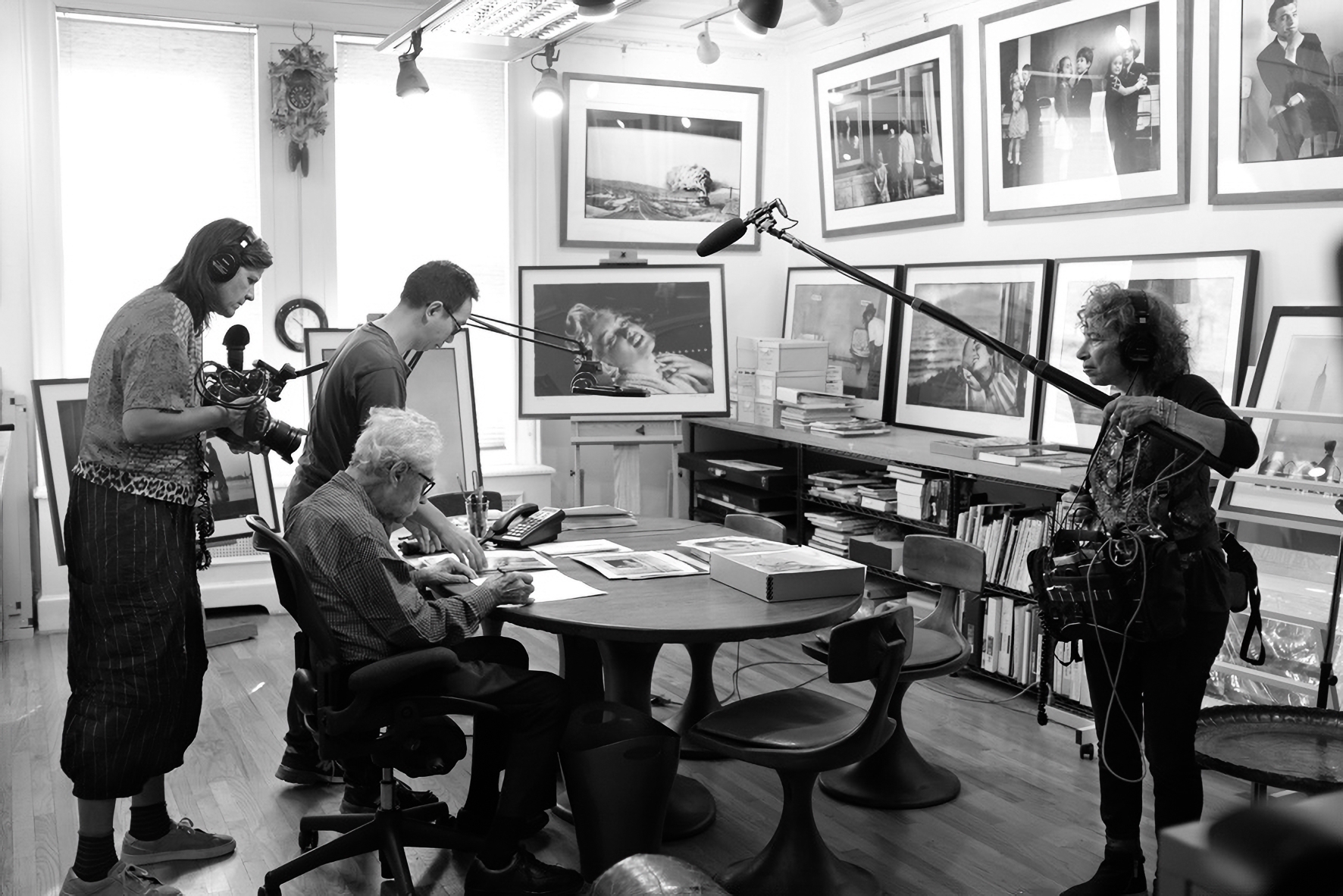
You can reasonably expect that when most audiences watch a documentary, they’re taking it at face value, that what they’re seeing actually happened. But the frame you choose, where you cut — you’re in control of ‘reality’ itself.
I would not use the word control, but you are correct that we have the capacity to mask or to hide our relationship to the visual, and what I’m interested in are ways of filming that reveal those relationships. I believe in the sophistication of audiences, that people are incredibly visually literate already, so instead of me trying to control what people think or feel when they see something, what I want to do is create work that leaves the space for the viewer to see it and feel it in their own way.
Sometimes you’re telling other people’s histories or their trauma and suffering, so are you perpetuating the systemic damage that’s been done, or are you encouraging people to think about and see the world differently? You don’t approach your work as a documentarian with authority and try to control — you respond and search. And when I share what I’ve found, it explicitly comes from me. I’m not leaving my work open to interpretation. There is a point of view to everything I do, and I’ll provide you with the clues to find your way to that point. But you’re choosing to not directly inflect. Johnson: That’s the challenge. It’s in the way we film that an audience is able to share the experience of ‘being there,’ but we’re often too used to making the kinds of images that don’t allow for that — and that’s what I’m interested in disrupting.
Johnson was invited to became a member of the ASC in 2020.
